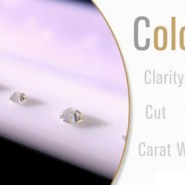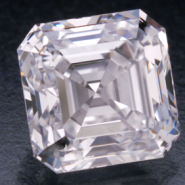When browsing for jewelry, one might be captivated by the glimmer of a diamond’s sparkle, and assume that most diamonds are colorless. And while it’s true that certain diamonds have colors so blindingly brilliant that they take on beautiful hues of the rainbow, truly colorless diamonds are actually quite rare.
Read More >>Some diamond cut’s never go out of style, especially when they boast a royal heritage and have been redesigned and reinvented. Such is the case with the popular Asscher cut.
Read More >>Few things in nature are absolutely perfect. This is also true with diamonds. As touched on in the first part of the clarity series, diamonds have internal features called inclusions and surface irregularities called blemishes. Together, inclusions and blemishes make up a diamond’s clarity characteristic.
Read More >>Diamond clarity is one of the four quality factors (the 4Cs) that describe and determine the value of a diamond. By definition, clarity means “a gemstone’s relative freedom from inclusions and blemishes.” These two terms are locational- blemishes are found on the outside of the gem and inclusions are located on the inside. Both of these clarity characteristics can dim the brilliance of a diamond, though some are so minute that they are invisible to the naked eye.
Read More >>Do you know why color diamonds always are the big winners at auction or how color diamonds get their high auction prices?
GIA’s Russell Shor recently reported that auction house executives and industry observers agree on a number of reasons why fancy-color diamonds can achieve such high prices, even during an economic hardship. Some reasons are the international reach of auction houses, the rarity of top gems, and the greater number of private buyers going to auction.
Read More >>


